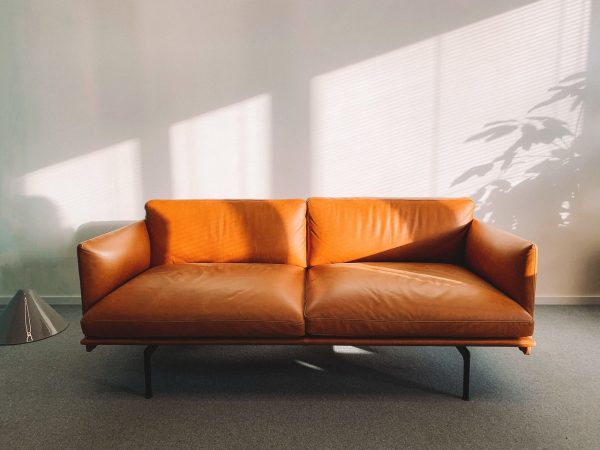The home is where you can relax and chill, but it’s also where your allergies can be triggered. Allergens can be anything from pollen, dust mites, mould to animal dander.
While allergies can’t be cured, you shouldn’t just rely on antihistamines. Allergic rhinitis can be controlled by minimising your exposure to allergens. And you can do so by allergy-proofing your environment, starting from your home with these simple steps.
Choose furniture with the right material
Opt for those made of materials that are low-maintenance and easy to clean. These include leather (or its synthetic counterpart), wood, metal and plastic. Avoid those made of fabric as they trap moisture and dust, and trigger your allergies more often.
If you’re shopping for a new sofa, go for one with synthetic or genuine leather covering instead of upholstery for easy cleaning.

Prefer the fabric texture over leather? Consider getting removable fabric covers so that you can wash them often easily.
But if you already have a piece of furniture made of fabric and don’t intend on replacing it, you should at least vacuum it once a week.
Ditch the carpets
Carpets and rugs are notorious for being dust traps. If you’re sensitive to dust, it’s best to remove them to allergy-proof your home, especially if they’re in the bedroom.
Otherwise, be sure to vacuum them every week to reduce the dust level at home.
Pick the right curtain material
Don’t install horizontal blinds (also known as Venetian blinds) as their window slats are harder to clean. You should also avoid putting up dust traps like heavy drapes.
Instead, consider installing roller blinds that you can wipe easily, or washable curtains.
Change your beddings
This is one of the most essential steps to allergy-proofing your home, especially since it’s where you spend most of your resting time.
Use allergen-proof covers for your pillows, mattresses and duvets. And if you’re using a feather pillow, you may want to change it to a synthetic one.
Plus, don’t forget to change your sheets regularly. Wash your sheets, pillowcases and blankets weekly in hot water, ideally at 45 to 60°C, to kill off common allergens like dust mites, bacteria and bed bugs.
Clean your house often
It doesn’t have to be a full-blown spring cleaning, but you should mop the floor regularly to minimise the allergens present at home.
Consider using a vacuum cleaner over a broom to keep the dust level low. Investing in a vacuum cleaner with a high-efficiency particulate air (HEPA) filter can also help remove tiny airborne particles.
Don’t forget to clean the shelves too. In fact, you should aim to clean every surface with a damp cloth to wipe the dust away.
Be sure to remove clutter that collects dust quickly, such as old magazines and knick-knacks.
Cut down on the use of chemicals
Many cleaning products contain volatile organic compounds, which are ingredients that can irritate the eyes, nose, throat and skin.
Opt for those made of natural ingredients instead. Better yet, DIY your cleaning solutions with ingredients found in the kitchen.
For instance, you can use baking soda to scrub any surface at home. Vinegar can also remove mildew, bacteria and grime on surfaces like wood and countertops.
Invest in an air purifier
Having an air purifier can also help to allergy-proof your home and control the air quality. For better purification, consider getting one fitted with a HEPA filter. They trap dust and tiny allergens like pollen, pet dander, dust mites and bacteria.
Be sure to check its capacity as well; it should be powerful enough for the whole room.
Open the windows
The bad thing about Singapore’s hot and humid weather is that it’s a breeding ground for dust mites and mould.
One simple way to reduce the humidity levels at home is to open the windows. Allowing natural ventilation ensures that fresh air is being circulated in the room.
Buy a dehumidifier
If opening the windows isn’t enough, you may want to get a dehumidifier too. It works by sucking the moisture in the air, lowering the humidity levels to prevent mould and mildew from growing.
Keep your pets off your bedroom and furniture
Pet fur can exacerbate your allergies and even cause breathing problems. So if you have pets, try not to let them get on your furniture and bed.

Bathe them at least once a week to reduce the allergens in the dander they shed.
Or if you’re planning to have a pet, but are prone to allergies, consider doing an allergy or skin prick test first before adopting or buying one.
Store soft toys in boxes
Having soft toys around can be comforting for your children, but they’re also dust traps. It’s best to cut down on the number of soft toys on the bed and keep the rest in boxes.
If the soft toys are washable, be sure to wash them regularly. Otherwise, put them in a ziplock bag and freeze them overnight to kill the dust mites.
Allergy-proofing your home to keep your allergies at bay isn’t hard. Simple steps like washing your sheets regularly and vacuuming your home to keep you and your family healthy can work wonders.
If you found this article helpful, 99.co recommends Spring cleaning 101: Out with the old (and dusty), and in with the new! and How to choose a cleaning service in Singapore.
Looking for a property to buy or rent? Find your dream home on Singapore’s largest property portal 99.co!
The post 11 steps to allergy-proofing your home appeared first on 99.co.

